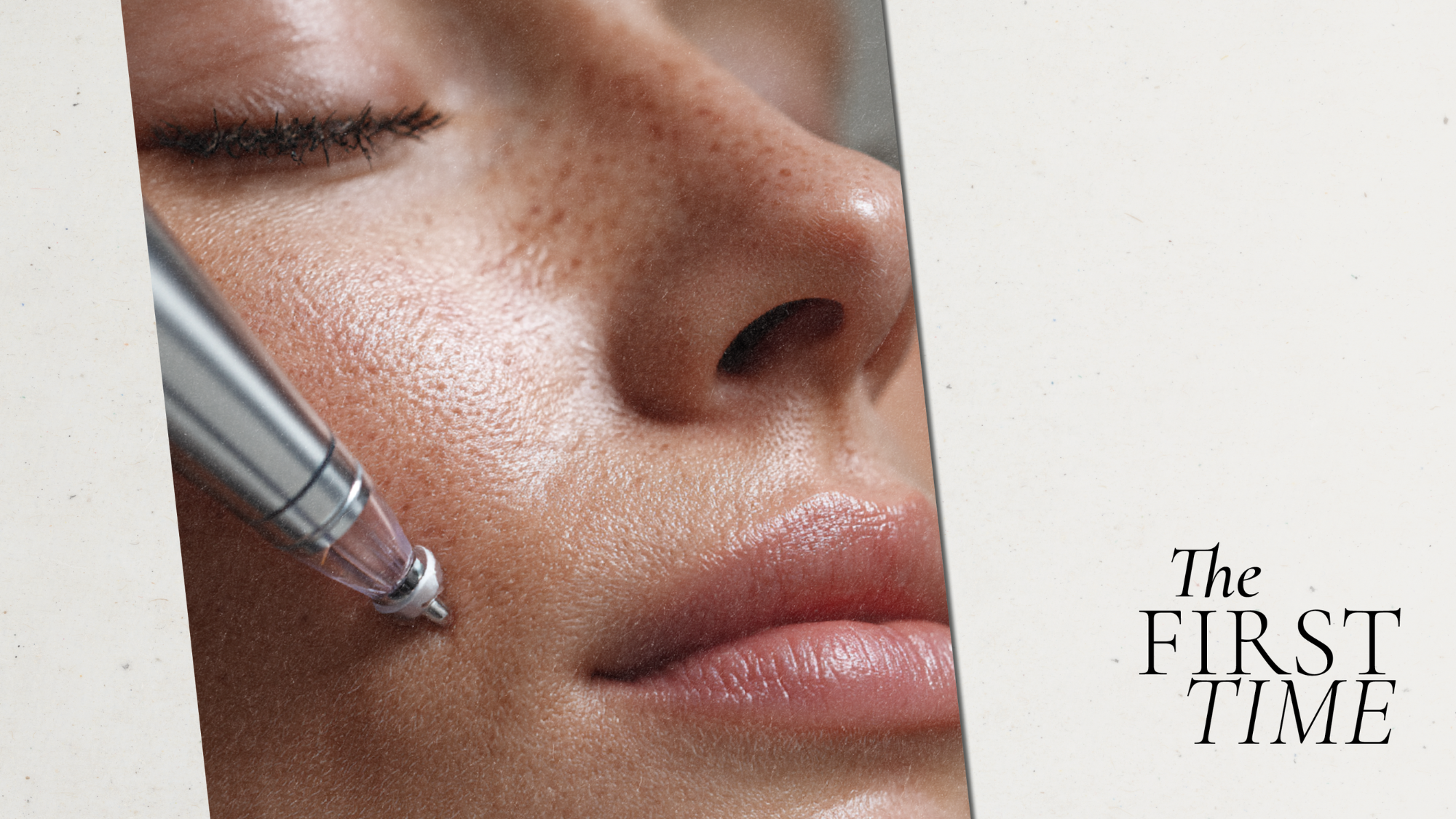I Was One of the First People in the UK to Try Korean Liquid Microneedling—Here’s Why It’s Set to Be the New Treatment Du Jour
It's non-invasive, with little to no downtime


I'm a veritable guinea pig when it comes to skincare—so my interest is very much piqued whenever I hear of any cutting-edge technology. That is especially if it hails from South Korea, which remains lightyears ahead of the west in terms of innovation.
The latest in this regard is liquid microneedling, which K-beauty expert and aesthetics doctor, Christine Hall, let me in on several months ago. I was one of the first people to trial it in the UK, and the experience blew me away.
It's unlike any other microneedling session I've ever had, precisely because there are no needles; it's completely non-invasive but still delivers results, which in my opinion are superior to the traditional method. Plus, it comes with little to no downtime. In fact, I'd say that aside from some mild itchiness, I experienced no redness or anything that stopped me going about my daily life, and that's despite having incredibly sensitive skin.
So, how does it work? "Liquid microneedling is a non-invasive skin treatment that uses microscopic spicules—tiny, naturally derived needle-like structures from marine sponges coated with active ingredients such as peptides, niacinamide, and growth cica," explains Hall. "These spicules are applied topically and gently pressed into the skin, where they create microchannels to deliver these potent actives deep into the epidermis."
This is typical of the south Korean approach to skin; which they treat for the long term, rather than immediate results. They do this by prioritising deep ingredient absorption and minimal downtime—and their latest advancement are these spicule-based delivery systems.
"In South Korea where the technique was pioneered there are many at home liquid microneedling formulations, with VT Reedleshot being one that became viral in 2024," adds Dr Hall. "These have slowly filtered into the UK market but at the Taktouk Clinic, we use only medical-grade, clinically approved formulations such as Idenel microneedling. In clinic treatments usually contain different ingredients and a higher concentration of the spicules themselves."
Everything you need to know about my experience, and getting the treatment yourself, ahead.
Celebrity news, beauty, fashion advice, and fascinating features, delivered straight to your inbox!
How does it differ from traditional microneedling?
"Unlike traditional microneedling, which uses mechanical needles to puncture the skin and stimulate collagen, liquid microneedling uses microscopic spicules embedded in a serum or ampoule," explains Dr Hall. "These spicules painlessly pierce the skin to deliver active ingredients directly to where they are needed, bypassing the barrier function of the skin."
This comes with benefits that are different from traditional methods, including minimal downtime and significantly improved absorption of potent active ingredients. But you're still essentially getting the treatment for the same issues, so it helps reduce fine lines, refine pores, and even out pigmentation and scars, while also boosting collagen and elastin production.
"The result is enhanced radiance, smoother skin texture, and that highly sought-after “expensive skin” glow—healthy, luminous, and youthful, without ever appearing 'done'," notes Christine, adding: "It’s also particularly suitable for individuals who are hesitant about injectables. Liquid microneedling offers a gentle yet highly effective introduction to medical-grade skin treatments.
What happens during a liquid microneedling appointment?
My treatment began with my practitioner (Taktouk's Lead Senior Aesthetician, Nadia Aminian) thoroughly cleaning my skin with a powder-based cleanser from Idenel Professional to remove any impurities and prep the skin.
Next, she gently massaged a specially formulated serum infused with millions of microscopic spicules into my skin, allowing them to penetrate the outermost layer. This, in turn, creates thousands of microchannels across the skin's surface. While the sensation wasn't uncomfortable or painful, it was strange, and felt akin to being pricked lightly all over. It was nowhere near the feeling of having actual needles on the face.
After roughly two rounds of application, Aminian applied a sheet mask and used a cold massage tool to cool my face down, as well as soothe and hydrate. The entire process was done within 15 minutes, and door-to-door the entire experience was around half an hour.
What happens after the treatment?
The spicules are naturally shed from the skin within 24 hours as the active ingredients, including peptides, niacinamide, and vitamins, have been delivered into the deeper layers of the epidermis, Dr Hall explains. "Here, they can stimulate collagen production, reduce inflammation, and promote overall skin renewal."
But in the meantime, your skin may looked flush or mildly red. It can often feel dry, tight and may have a slight tingling sensation, which the doctor says is completely normal and shows that the skin's natural renewal process has begun.
"While the skin’s moisture barrier is temporarily affected, this is part of how the treatment boosts hydration and skin health over time," adds Dr Hall. "Controlled microtrauma and the delivery of skin actives are the key to collagen synthesis and the creation of a strong skin barrier."
Though I am prone to redness and sensitivity, I surprisingly didn't experience any after the treatment. What I did find, though, was that my skin was tingly and borderline itchy all over, especially when I pressed on it. This peaked the day of the treatment and diminished over the following day.
Generally speaking, most people can resume normal activities the following day. Some mild redness and dryness can linger for 24 - 48 hours, but it’s nothing that would prevent you from working or socialising.
What products should you use right after?
I was given tester sizes of Idanel's bespoke aftercare line after my treatment, but in every case, Dr Hall advises sticking to gentle, hydrating skincare. "I typically recommend using a barrier-repairing moisturiser, a non-active hyaluronic acid serum, and a broad-spectrum SPF 50 sunscreen. It’s important to avoid active ingredients like retinol or acids for at least three days post-treatment to allow the skin to heal and maximise results."
"You can resume your full skincare routine, including actives, by day seven. Make-up can usually be applied after 24 hours, but I advise waiting 48 hours if possible to let the skin recover," adds the doctor.
When will you start noticing results?
You'll usually start to see visible results within 24 hours. Once the microspicules have been naturally exfoliated out and the actives have fully absorbed, the skin looks noticeably smoother, brighter, and more refined—typically after 72 hours.

Nessa Humayun is the Beauty Editor at Marie Claire UK. With over eight years of editorial experience across lifestyle sectors, Nessa was previously the Editorial Lead of HUNGER Magazine, and has bylines in British Vogue, Dazed, and Cosmopolitan. A self-confessed human guinea pig, Nessa covers everything from product must-haves to long-reads about the industry writ large. Her beauty ethos is all about using products that work hard, so you don't have to.